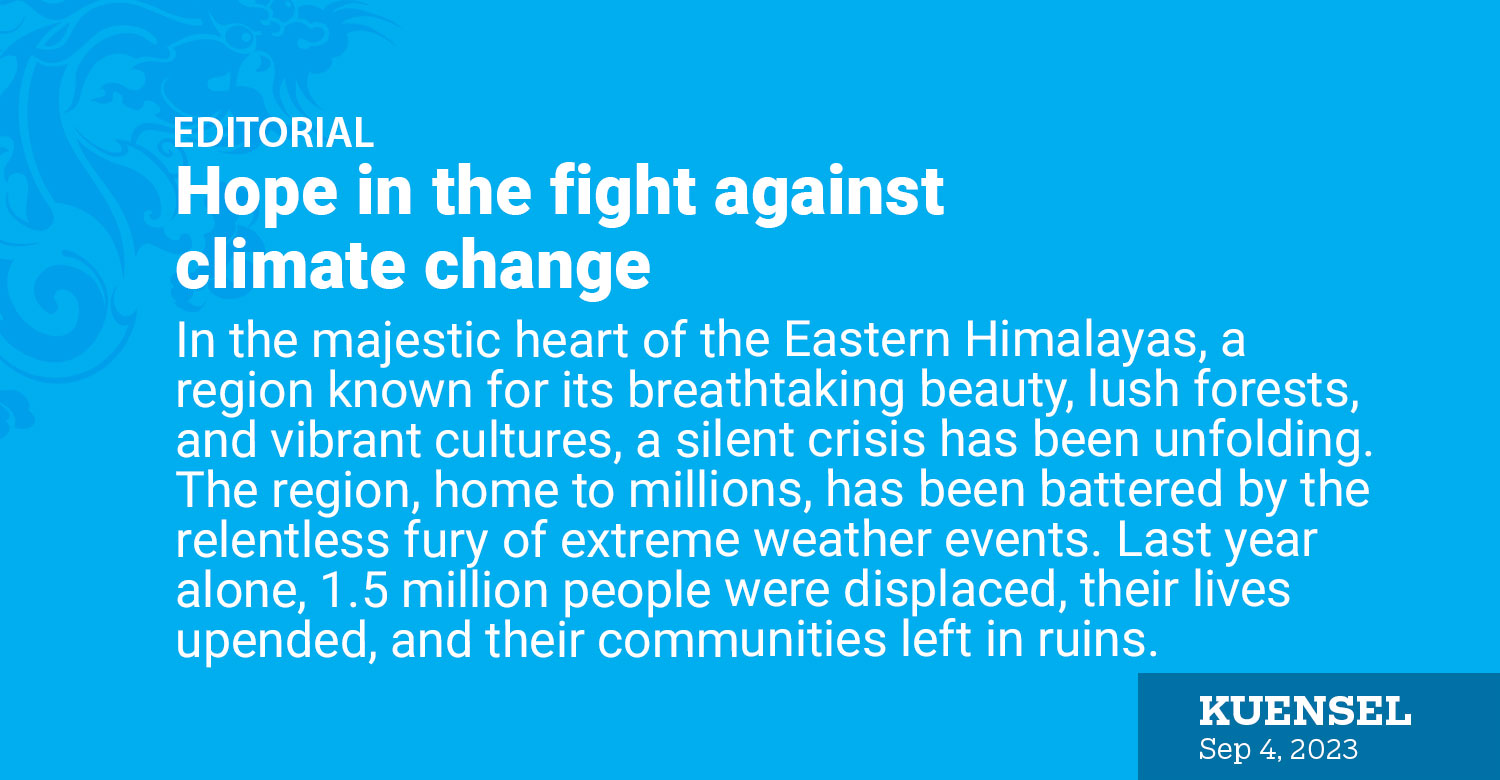In the majestic heart of the Eastern Himalayas, a region known for its breathtaking beauty, lush forests, and vibrant cultures, a silent crisis has been unfolding. The region, home to millions, has been battered by the relentless fury of extreme weather events. Last year alone, 1.5 million people were displaced, their lives upended, and their communities left in ruins. The question that looms before us is stark and urgent: How long can we stand idly by as the consequences of climate change unravel our world?
But amid this crisis, there is a glimmer of hope. Bhutan, a nation often celebrated for its pristine landscapes and unwavering commitment to environmental conservation, is stepping forward as a beacon of inspiration and action. In partnership with regional allies, Bhutan is poised to lead a transformative initiative, one that not only protects its own land but also sets a precedent for global conservation efforts.
The Bhutan Trust Fund for Environmental Conservation and the Bhutan Ecological Society have assumed the mantle of leadership at home, joining hands with neighbouring nations, including India, Nepal, and Bangladesh. This monumental endeavour is a direct outcome of the G20 Presidency held in New Delhi, a testament to the urgency of our times.
The mission is clear: Raise one billion US dollars, plant one billion trees, and protect and restore one million hectares of land. But the implications of this mission extend far beyond these numbers. At its core, this initiative seeks to put the Eastern Himalayan ecosystem front and center on the global conservation agenda. It recognises that the fate of the one billion people who rely on this ecosystem is intertwined with the health of our planet.
Bhutan has long been a guardian of its natural treasures. Our commitment to maintaining carbon neutrality, lush forests cover of over 70 percent of our land, and our pioneering Gross National Happiness Index all speak to a nation deeply rooted in sustainable living.
Now, Bhutan’s green leadership is poised to have a global impact. It offers not just its insights and experiences but also the invaluable lesson that in the face of climate change, action is not just a responsibility; it is an opportunity.
The Eastern Himalayan region is a microcosm of the broader climate crisis. As we witness melting glaciers, erratic weather patterns, and the displacement of millions, the urgency for collective action cannot be overstated. Bhutan’s leadership in this initiative is not just commendable; it is a lifeline to a planet teetering on the edge.
As we look ahead to 2050, the projections are stark. If we fail to act decisively now, the consequences of climate change will escalate into a catastrophe. But with four at the forefront of this historic initiative, we have a reason to hope. It is a testament to the power of conviction, the strength of purpose, and the ability to inspire change. It reminds us that even in the face of daunting challenges, individuals and nations can come together to chart a new course.


